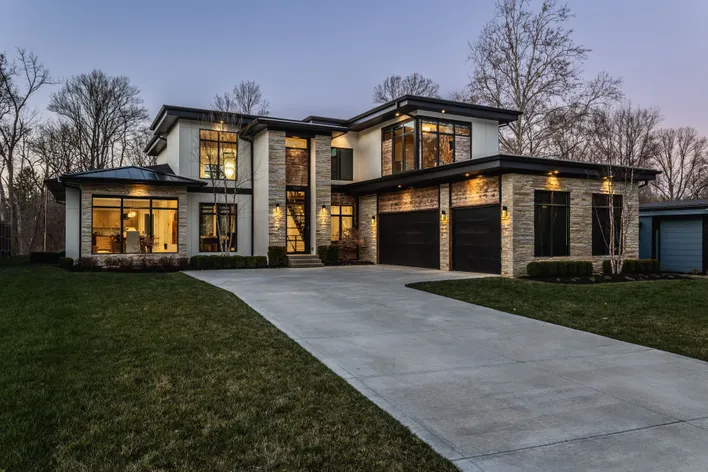Physician Mortgage Loans: Tips for Saving on Down Payment

Purchasing a home is a significant milestone for anyone, including medical professionals. As a physician, dentist, or other qualifying medical licensee, you may face unique challenges when it comes to obtaining a mortgage due to high student loan debt and a lower starting salary. However, there is good news – physician mortgage loans are specifically designed to address these challenges and offer favorable terms and options tailored to your needs.
In this article, we will explore the world of physician mortgage loans and provide valuable tips on how you can save on your down payment. We will delve into the benefits of physician loans, the different loan types and programs available, eligibility criteria, and much more. By the end, you’ll have a comprehensive understanding of physician mortgage loans and be equipped with the knowledge to make informed decisions about your home-buying journey.
What are Physician Mortgage Loans?
Physician mortgage loans, also known as doctor loans, are mortgage loans specifically designed for licensed physicians, dentists, and other qualifying medical professionals. These loans recognize the unique financial situations of medical professionals, including their high debt-to-income ratios and potential for future income growth.
One of the key advantages of physician mortgage loans is that they offer more favorable terms compared to traditional mortgages. These terms may include zero-dollar down payments, higher loan-to-value ratios, and lower interest rates. Additionally, physician loans often do not require private mortgage insurance (PMI), which can save borrowers a significant amount of money over the life of their loan.
Benefits of Physician Mortgage Loans
Physician mortgage loans come with several benefits that make them an attractive option for medical professionals. These are the key advantages:
1. Zero or Low Down Payment: One of the most significant benefits of physician mortgage loans is the option for a zero or low down payment. Traditional mortgages typically require a minimum down payment of 20% of the purchase price to avoid PMI. However, physician loans allow you to finance up to 100% of the purchase price, eliminating the need for a substantial upfront payment. This can be especially beneficial for medical professionals who may have limited savings due to student loan debt.
2. No Private Mortgage Insurance (PMI): Private mortgage insurance (PMI) is often required by lenders when the down payment is less than 20% of the purchase price. PMI adds an additional cost to your monthly mortgage payment and can significantly increase the overall cost of homeownership. However, physician mortgage loans typically do not require PMI, saving you money in the long run.
3. Favorable Interest Rates: Physician mortgage loans often come with competitive interest rates. Lenders recognize the stability and earning potential of medical professionals, which can result in lower interest rates compared to conventional mortgages. Lowering the interest rate on your mortgage saves thousands of dollars over the life of your loan.
4. Flexible Debt-to-Income Ratios: Medical professionals often have high student loan debt compared to their income. Traditional mortgages may disqualify borrowers with high debt-to-income ratios. However, physician mortgages account fort the unique financial circumstances of medical professionals. They typically have more flexible debt-to-income ratio requirements, allowing you to qualify for a mortgage even with significant student loan debt.
5. Higher Loan-to-Value Ratios: Physician mortgage loans also offer higher loan-to-value ratios, allowing you to borrow a larger percentage of the purchase price of the home. While conventional mortgages may limit the loan-to-value ratio to 80%, physician loans can go up to 100% of the purchase price. This allows you to purchase a home without a substantial upfront payment.
Loan Types and Programs for Physicians
Physician mortgage loans offer various loan types and programs tailored to the specific needs of medical professionals. Understanding the different options can help you choose the best loan for your situation. Here are some common loan types and programs available:
1. Fixed-Rate Mortgages: Fixed-rate mortgages are a popular option among physicians. The interest rate remains the same throughout the life of the loan with this option. This provides stability and predictability, allowing you to plan your budget accurately. These are a good option if you plan to stay in your home for a long time.
2. Adjustable-Rate Mortgages (ARMs): Adjustable-rate mortgages (ARMs) offer a fixed interest rate for an initial period, typically 5, 7, or 10 years. After the initial period, the interest rate adjusts periodically based on market conditions. ARMs often come with lower interest rates initially, making them attractive for short-term homeownership or if you anticipate refinancing or selling the property before the rate adjusts.
3. Loan Limits: Physician mortgage loans may have different loan limits depending on the lender. While conventional mortgages may have restrictions on the loan amount, physician loans often offer more flexibility. Some lenders can finance up to $1,000,000 or even higher without requiring a down payment.
4. Loan-to-Value Ratio: Loan-to-value (LTV) ratio determines the percentage of the home’s purchase price that you can borrow. While conventional mortgages typically require a down payment of at least 20%, physician mortgage loans may allow you to finance up to 100% of the purchase price. This means you can potentially purchase a home without any upfront payment.
Qualifying for a Physician Mortgage Loan
To qualify for a physician mortgage loan, you usually need to meet specific criteria. While the exact requirements may vary among lenders, here are some common eligibility criteria for physician loans:
1. Licensed Medical Professional: Physician mortgage loans are specifically designed for licensed physicians, dentists, and other qualifying medical professionals. To qualify, you need to provide proof of your medical license and be in good standing with your state medical board.
2. Good Credit Score: While perfect credit is not always required, having a good credit score is essential to qualify for a physician mortgage loan. Typically, a credit score of 700 or above is needed. The higher your credit score, the better your interest rates and loan terms will be.
3. Verifiable Income: Lenders will assess your income to ensure that you can afford the mortgage payments. As a physician, you may have a stable income, which can work in your favor when applying for a physician mortgage loan. Lenders may require you to provide proof of income, such as pay stubs, tax returns, or an employment contract.
4. Debt-to-Income Ratio: Your debt-to-income (DTI) ratio is a crucial factor in determining your eligibility for a physician loan. While conventional mortgages may have strict DTI requirements, physician loans often have more flexibility. Lenders understand that medical professionals may have high student loan debt and consider your future earning potential when evaluating your DTI ratio.
5. Residency or Fellowship Status: If you are currently in your residency or fellowship, you can qualify for a physician mortgage loan. Some lenders may require you to have a contract with a hospital or group practice before approving your loan. However, there are lenders who offer loans specifically tailored to medical residents and fellows, taking into account their unique financial circumstances.
6. U.S. Citizenship or Visa Documentation: In general, U.S. citizenship is not a requirement for a physician mortgage loan. However, if you are not a U.S. citizen, you will need to provide specific visa documentation for eligibility. Lenders will review your visa documentation to determine your eligibility for the loan.

Tips for Saving on Down Payment
While physician mortgage loans offer the advantage of zero or low down payments, it’s still beneficial to save as much as possible. Here are some tips to help you save on your down payment:
1. Create a Budget and Savings Plan: Start by creating a budget and analyzing your expenses. Identify areas where you can cut back and allocate those savings towards your down payment. Consider automating your savings by setting up a separate account or using a dedicated savings app.
2. Minimize Expenses During Residency or Fellowship: If you’re currently in your residency or fellowship, it’s essential to be mindful of your expenses. Minimize unnecessary spending and focus on building your savings. By adopting a frugal lifestyle during this time, you can accumulate a significant amount towards your down payment.
3. Explore Down Payment Assistance Programs: While physician mortgage loans often eliminate the need for a substantial down payment, it’s still worth exploring down payment assistance programs. These programs can provide additional funds or grants to help you cover your down payment and closing costs.
4. Consider Gifts or Family Loans: If you have family members willing to help, consider accepting a gift or loan towards your down payment. Keep in mind that lenders may have specific guidelines regarding gift funds, such as requiring a gift letter or proof of the source of the funds. Consult with your lender to understand the requirements.
5. Evaluate Additional Sources of Income: Explore opportunities to generate additional income outside of your medical practice. This could include freelance work, consulting, or investing in real estate. By diversifying your income streams, you can accelerate your savings and increase your down payment amount.
6. Prioritize Debt Repayment: Reducing your debt burden can free up more funds for your down payment. Start by paying off high-interest debts, like credit cards and personal loans. By eliminating or minimizing these debts, you can redirect those payments towards your down payment savings.
7. Negotiate with Sellers: When purchasing a home, consider negotiating with the seller to cover some or all of the closing costs. This can help reduce your out-of-pocket expenses and allow you to allocate more funds towards your down payment. Work with your real estate agent to negotiate favorable terms.
8. Optimize Your Credit Score: A high credit score will enable better interest rates and more favorable loan terms. Take steps to optimize your credit score by paying bills on time, reducing credit card balances, and avoiding new credit inquiries. Review your credit report regularly and address any errors promptly.
9. Consult with a Mortgage Broker: Working with a mortgage broker like LeverageRx, who specializes in physician mortgage loans can provide valuable insights and guidance. By filling out our mortgage form, you’ll be connected only with lenders who are able to help you with a physician mortgage loan for your specific location and loan requirements.
By implementing these tips, you can maximize your savings and increase your down payment amount, providing you with more flexibility and potentially better loan terms.
Key Takeaways
Physician mortgage loans offer favorable terms, including zero or low down payments, competitive interest rates, and flexible eligibility criteria.
Remember to explore various options for saving on your down payment, such as budgeting, down payment assistance programs, and optimizing your credit score. Consult with a mortgage broker who specializes in physician loans to ensure you are connected with lenders who can help you find the best deal on your next mortgage.
With the right knowledge and planning, you can achieve your dream of homeownership while minimizing your financial burden. Take advantage of physician mortgage loans and navigate the path to your new home with confidence. Start exploring your options by requesting your rates today.




